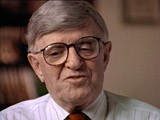You searched for: 5G基站源码搭建定制开发【TG���������@EK7676】平台包网搭建5G基站源码搭建定制开发【TG���������@EK7676】平台包网搭建1GZTwVod8U
<< Previous | Displaying results 691-700 of 821 for "5G基站源码搭建定制开发【TG���������@EK7676】平台包网搭建5G基站源码搭建定制开发【TG���������@EK7676】平台包网搭建1GZTwVod8U" | Next >>
-
Elya Rosenblat
ID CardElya, also known as Eli, was the eldest of three sons born to Yiddish-speaking Jewish parents. When Elya was a child his family moved to the industrial city of Radom, located about 60 miles south of Warsaw. After completing school in Radom, Elya apprenticed to become a women's tailor. Eventually, he became licensed as a master tailor. 1933-39: Elya married in 1936 and had a daughter one year later. He and his wife lived on Zeromskiego Street across from Elya's younger brother, Itzik, who was also a…
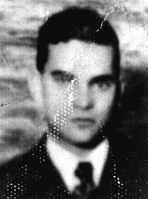
-
Moishe Krol
ID CardMoishe was born to Yiddish-speaking Jewish parents in Radom. The industrial city was known for its armaments factories in which Jews could not work and for its leather industry in which many Jews did. When Moishe was a teenager, he finished school and apprenticed to become a women's tailor. Moishe earned a certificate enabling him to be a licensed tailor and settled down in Radom. 1933-39: By 1939, Moishe had become a master tailor specializing in women's clothes. He remembers local antisemitic…

-
Eva Miodelska
ID CardEva was the oldest of four children born to a Jewish family in the central Polish town of Lipsko, about 30 miles southeast of Radom. The family lived at #12 Casimirska Street and Eva attended a private Jewish primary school. Eva's father owned a factory that produced shoes made from leather and cork. 1933-39: In the early 1930s Eva began secondary school in Zwolen, a town about 20 miles to the north. In 1936 her father left for Argentina to settle the estate of his deceased sister. For the two years he…
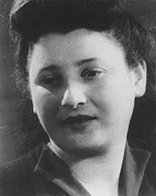
-
Refugees Today
ArticleAs of mid-2022, there were about 27 million refugees. Learn more about these refugees, the violence they face, and the global impact of the refugee crisis.

-
Estelle Laughlin
ArticleExplore Estelle Laughlin’s biography and learn about her experiences during the Warsaw ghetto uprising.
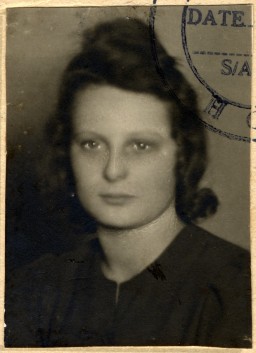
-
Manya Friedman
ArticleExplore Manya Friedmann’s biography and listen to her describe her experiences following the liberation of Auschwitz.
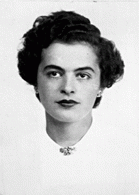
-
Letter home from an American soldier about the end of World War II in Europe
DocumentRudolph Daniel Sichel (b. 1915) left Germany in 1934 for England and then immigrated to the United States in 1936. His father, who had remained in Germany, was arrested during Kristallnacht, sent to Buchenwald for a couple of months, forced to sell his store at a loss, and immigrated to the United States with Rudolph's mother shortly after. Sichel joined the US Army in 1943, attending courses at the Military Intelligence Training Center at Camp Ritchie, MD. He landed on Utah Beach in July 1944 and was…
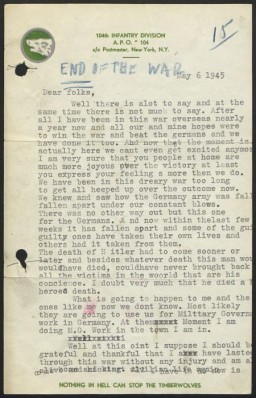
-
Hajj Amin al-Husayni meets Hitler
FilmIn this German propaganda newsreel, the former Mufti of Jerusalem, Hajj Amin al-Husayni, an Arab nationalist and prominent Muslim religious leader, meets Hitler for the first time. During the meeting, held in in the Reich chancellery, Hitler declined to grant al-Husayni’s request for a public statement--or a secret but formal treaty--in which Germany would: 1) pledge not to occupy Arab land, 2) recognize Arab striving for independence, and 3) support the “removal” of the proposed Jewish homeland in…
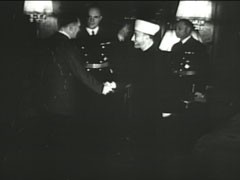
-
Siegfried Halbreich describes arrival at and brutality in the Gross-Rosen camp
Oral HistoryAfter Germany invaded Poland on September 1, 1939, Siegfried fled with a friend. They attempted to get papers allowing them to go to France, but were turned over to the Germans. Siegfried was jailed, taken to Berlin, and then transported to the Sachsenhausen camp near Berlin in October 1939. He was among the first Polish Jews imprisoned in Sachsenhausen. Inmates were mistreated and made to carry out forced labor. After two years, Siegfried was deported to the Gross-Rosen concentration camp, where he was…
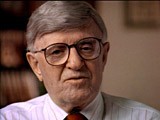
-
Siegfried Halbreich describes conditions in the Sachsenhausen camp
Oral HistoryAfter Germany invaded Poland on September 1, 1939, Siegfried fled with a friend. They attempted to get papers allowing them to go to France, but were turned over to the Germans. Siegfried was jailed, taken to Berlin, and then transported to the Sachsenhausen camp near Berlin in October 1939. He was among the first Polish Jews imprisoned in Sachsenhausen. Inmates were mistreated and made to carry out forced labor. After two years, Siegfried was deported to the Gross-Rosen concentration camp, where he was…
